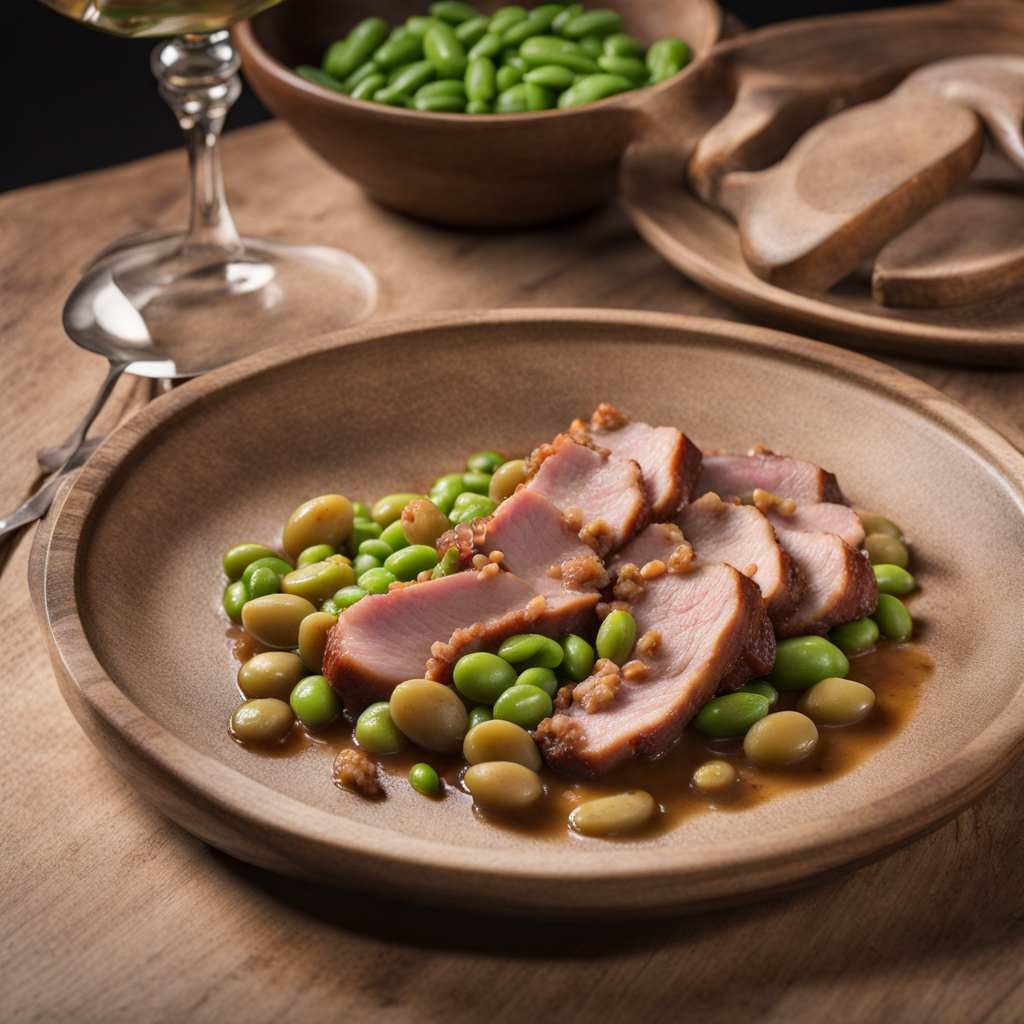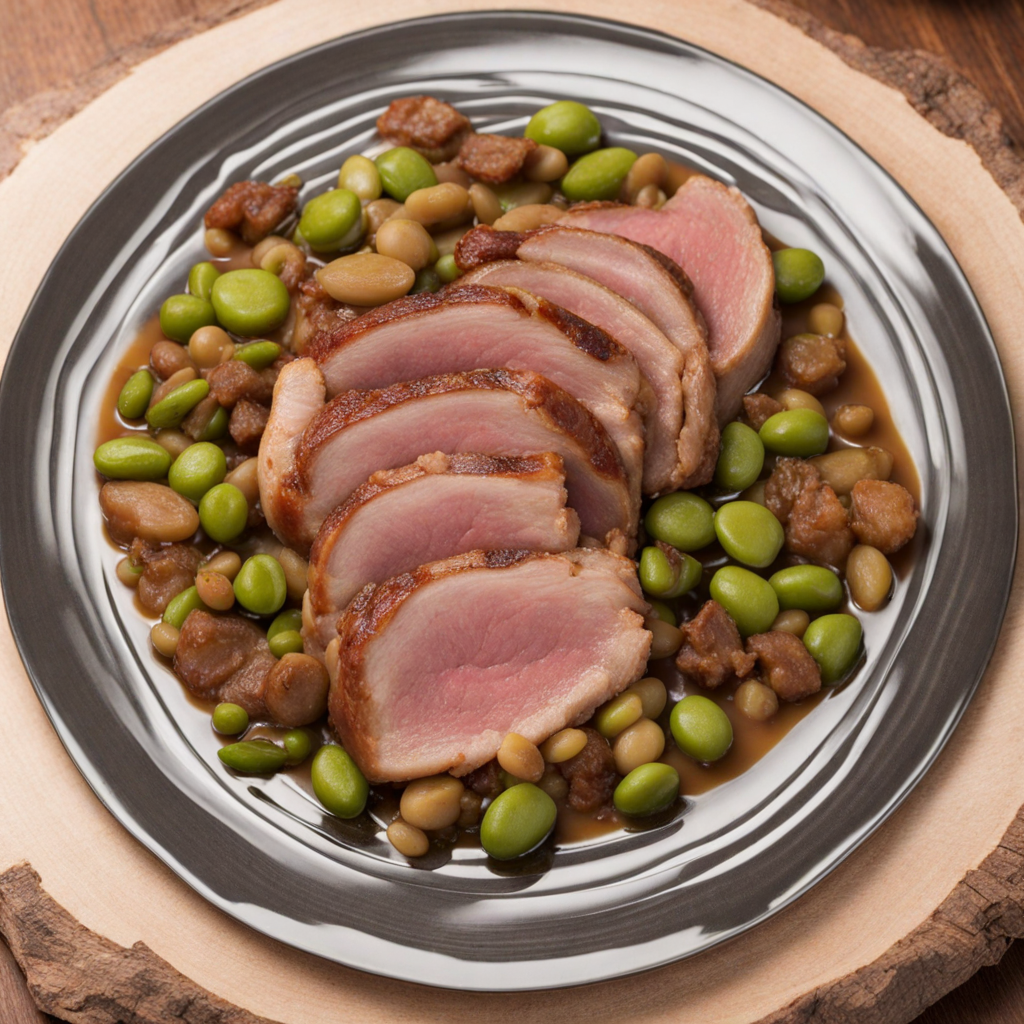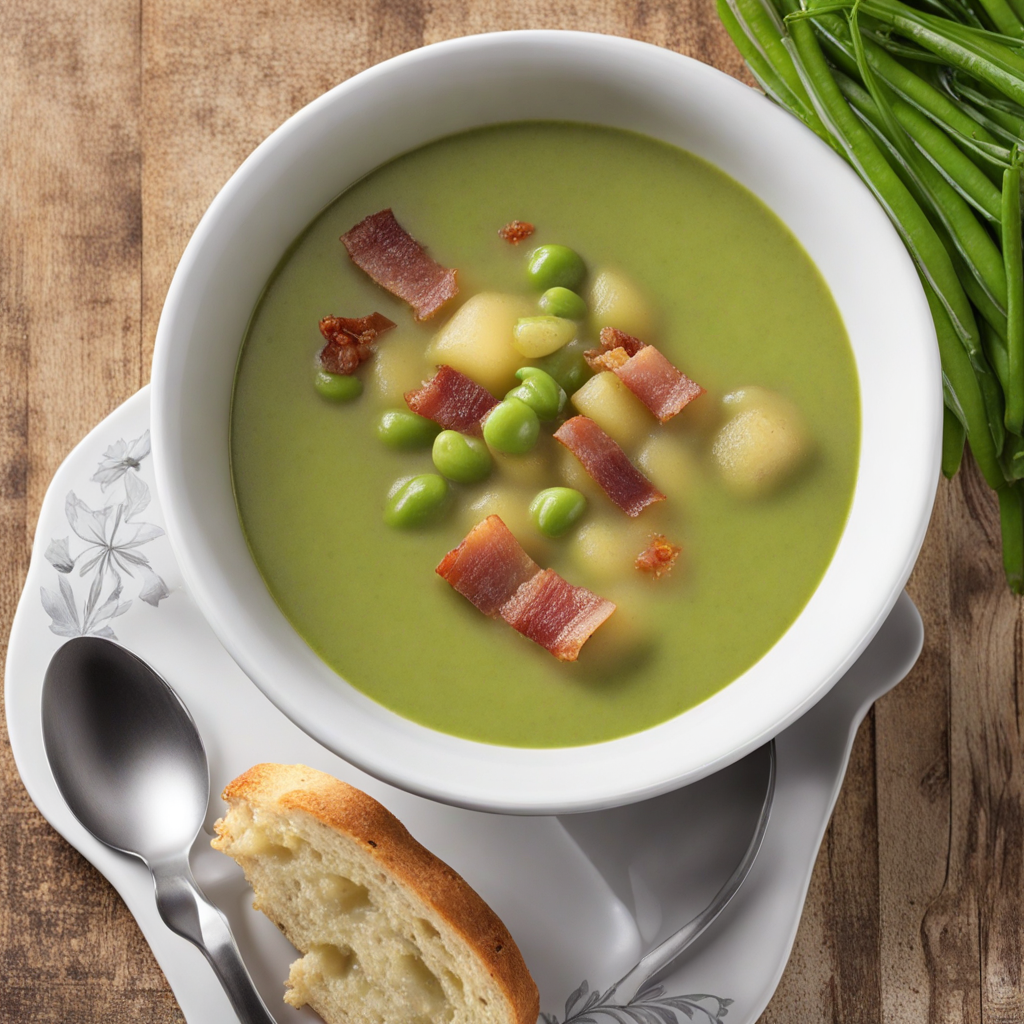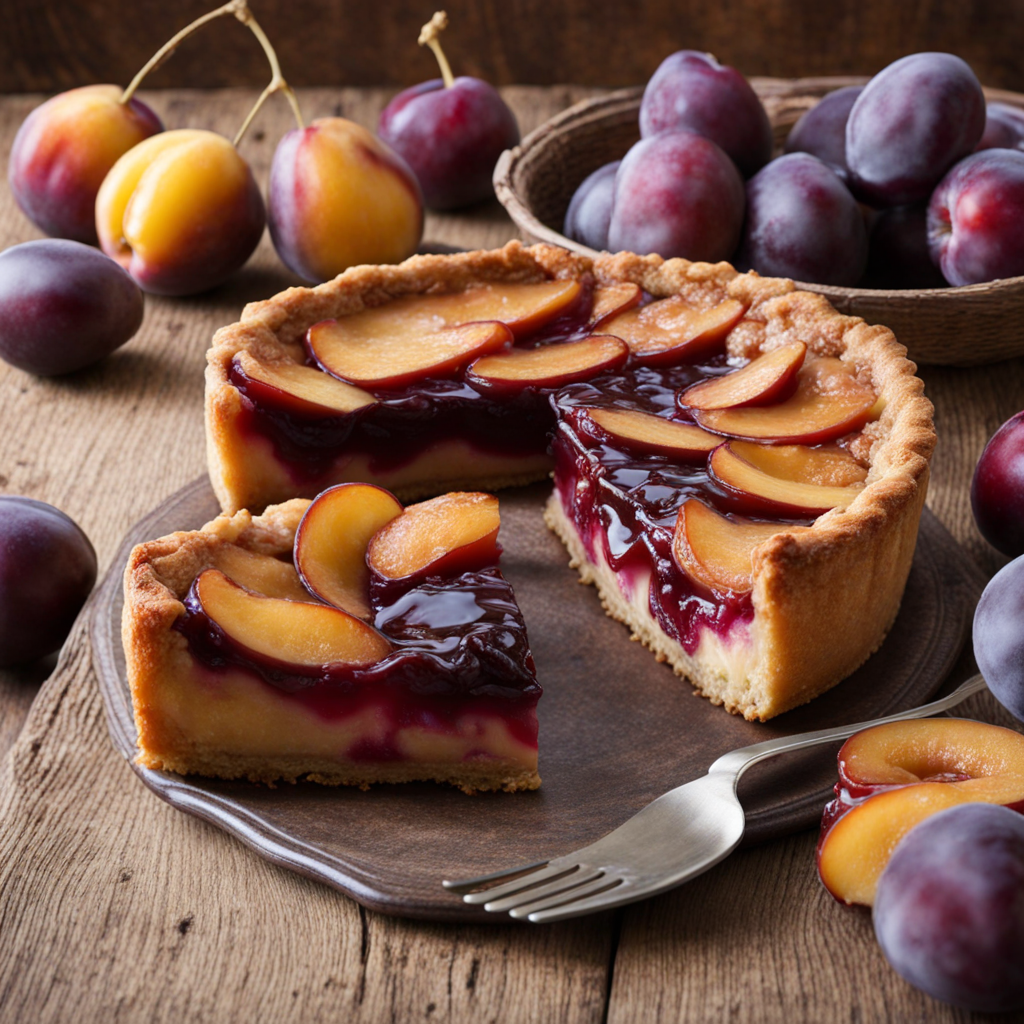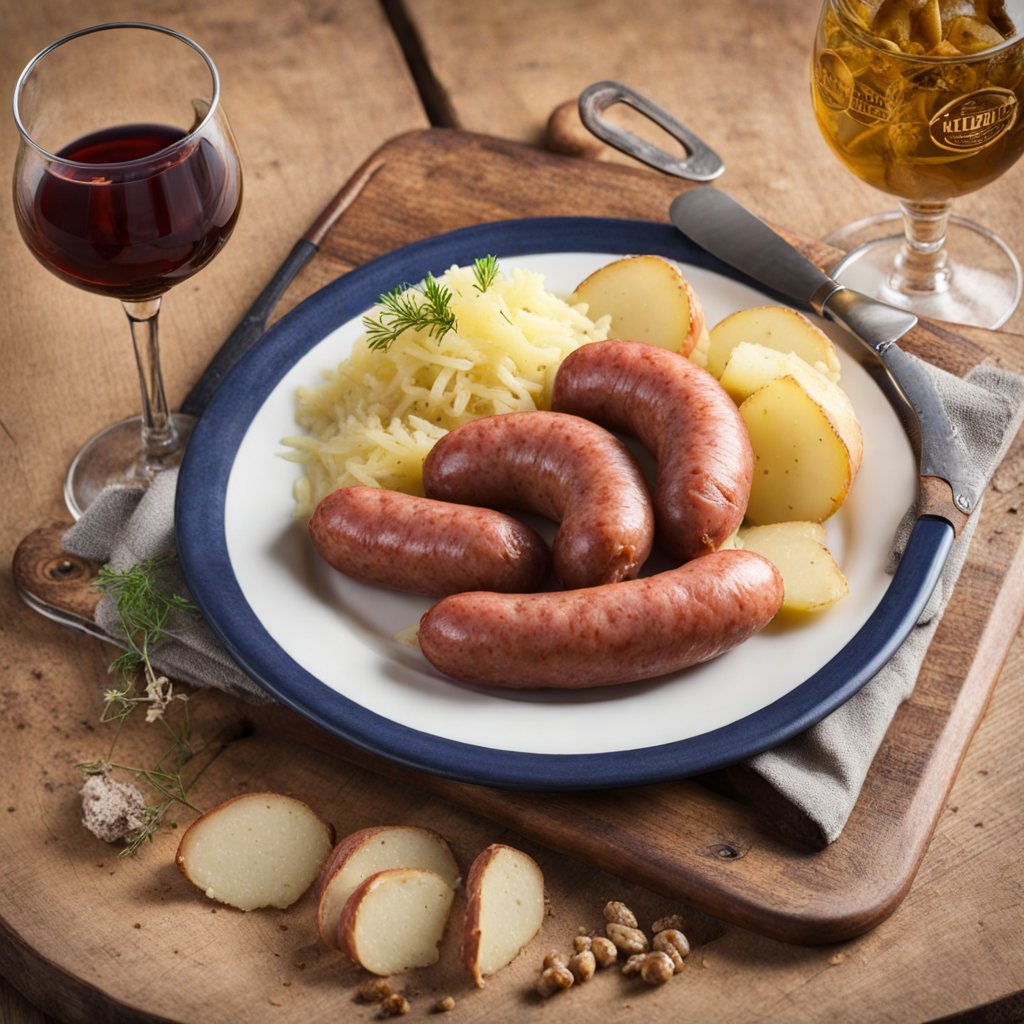Judd mat Gaardebounen
Judd mat Gaardebounen is a traditional dish from Luxembourg that beautifully showcases the country's culinary heritage. At its heart, the dish features judd, which is a smoked pork collar that is succulent and packed with flavor. The meat is typically brined before being smoked, giving it a distinctively rich and savory profile. When cooked, it becomes tender and juicy, often accompanied by a delightful sauce that enhances its natural taste. This dish is a perfect representation of Luxembourg's love for hearty, comforting meals that reflect the region's agricultural roots. The star of the show alongside the judd is the gaardebounen, or broad beans. These vibrant green legumes are often prepared simply, allowing their fresh and slightly earthy flavor to shine through. They are usually cooked until tender and may be seasoned with herbs, butter, or even a touch of garlic to elevate their taste. The combination of the smokiness from the judd and the creamy texture of the gaardebounen creates a harmonious balance that is both satisfying and comforting. Served often with a side of boiled potatoes or a light salad, Judd mat Gaardebounen embodies the essence of traditional Luxembourgish cuisine. The dish is not just a meal but a cultural experience, as it is often enjoyed during family gatherings or festive occasions. Each bite tells a story of the land and its people, making it a perfect choice for anyone looking to discover and savor the unique flavors of Luxembourg.
How It Became This Dish
Judd mat Gaardebounen: A Culinary Journey Through Luxembourg #### Origin and Historical Context Judd mat Gaardebounen is a quintessential dish from Luxembourg, often seen as a national treasure. This hearty meal features a smoked pork neck (known as "Judd") served alongside broad beans (or "Gaardebounen"), typically prepared with potatoes and a rich sauce. Its origins can be traced back to the rural culinary traditions of Luxembourg, where preserving meat and utilizing seasonal vegetables were essential for survival. The practice of smoking meat has roots that extend deep into European history, where it was a method used to preserve food before refrigeration became commonplace. In Luxembourg, this practice was particularly important due to the country’s agrarian lifestyle and the necessity to store food for long winters. The combination of smoked meats with locally sourced vegetables reflects the resourcefulness of the Luxembourgish people, highlighting their connection to the land and the seasons. #### Cultural Significance In Luxembourg, Judd mat Gaardebounen transcends mere sustenance; it is a dish steeped in national pride and tradition. It is often served during festive occasions and family gatherings, embodying the spirit of togetherness that characterizes Luxembourgish culture. The dish is particularly popular during the spring and summer months when broad beans are in season, but it can be enjoyed year-round. Judd mat Gaardebounen is more than a meal; it is a culinary reflection of Luxembourg’s identity. The dish encapsulates the historical influences of neighboring countries, such as Germany and France, while retaining its unique characteristics. The use of smoked pork neck is reminiscent of German charcuterie traditions, while the cooking techniques and flavors may draw from French gastronomy. This blend of influences is a testament to Luxembourg’s multicultural heritage, showcasing how food can serve as a bridge between diverse cultures. #### Ingredients and Preparation The key ingredients of Judd mat Gaardebounen—smoked pork neck, broad beans, and potatoes—speak to the agrarian roots of Luxembourgish cuisine. The smoked pork neck is often sourced from local butchers, who take pride in their craft. The meat is typically brined and then smoked, resulting in a flavorful, tender, and aromatic cut that is the star of the dish. Broad beans, also known as fava beans, are harvested in late spring and are an integral part of the dish. Their creamy texture and earthy flavor complement the richness of the pork, creating a harmonious balance. Potatoes, often included in the preparation, serve as a comforting base that rounds out the meal. To prepare Judd mat Gaardebounen, the smoked pork neck is first boiled to tenderize the meat and infuse the broth with flavor. The broad beans are then added to the pot, along with potatoes and various seasonings, including onions and herbs. The dish is traditionally served with a simple sauce made from the cooking liquid, thickened with a roux or enriched with cream, making it a satisfying and hearty meal. #### Development Over Time As Luxembourg has evolved over the centuries, so too has Judd mat Gaardebounen. In the past, the dish was often a peasant meal, consumed by farmers and laborers as a substantial source of nourishment. However, with the rise of Luxembourg’s economy and the influence of international cuisine, Judd mat Gaardebounen has found its way onto the menus of upscale restaurants and has become a symbol of national gastronomy. In recent years, there has been a renewed interest in traditional Luxembourgish cuisine, driven by a desire to preserve culinary heritage and promote local ingredients. This movement has encouraged chefs to reinterpret classic dishes like Judd mat Gaardebounen, incorporating modern techniques while respecting the traditional flavors. Furthermore, the dish has gained recognition beyond Luxembourg’s borders, attracting attention at food festivals and culinary events. Its representation of Luxembourg’s culinary identity has made it a popular choice for tourists seeking an authentic taste of the Grand Duchy. Local food producers and chefs are now collaborating to promote the dish, highlighting its roots and the importance of sustainable agriculture. #### Contemporary Associations Today, Judd mat Gaardebounen is often associated with national pride and cultural heritage. It is not uncommon to see this dish featured during Luxembourg’s National Day celebrations, where it serves as a reminder of the country’s rich culinary traditions. Additionally, it has become a staple at local food festivals, where chefs showcase their interpretations alongside other traditional dishes. In recent years, the dish has also been embraced by the younger generation, who are keen to explore and celebrate their culinary heritage. Social media has played a significant role in this revival, with food bloggers and influencers sharing their experiences and recipes, thus reaching a wider audience. This enthusiasm for traditional foods has sparked interest in cooking classes and workshops that focus on Luxembourgish cuisine, further solidifying the place of Judd mat Gaardebounen in contemporary culinary discourse. #### Conclusion Judd mat Gaardebounen is more than just a dish; it is a reflection of Luxembourg’s history, culture, and identity. From its humble origins as a peasant meal to its status as a symbol of national pride, this dish encapsulates the spirit of Luxembourg and its people. As culinary traditions continue to evolve, Judd mat Gaardebounen remains a beloved classic, bridging the gap between past and present, and reminding us of the importance of food in shaping cultural narratives. As Luxembourg continues to navigate the complexities of modern life, the enduring appeal of Judd mat Gaardebounen serves as a testament to the power of food to connect generations, celebrate heritage, and nourish not only the body but also the soul. Whether enjoyed at a family gathering, a festive celebration, or a fine dining establishment, this dish embodies the essence of Luxembourgish culinary tradition, inviting all to partake in its rich flavors and cultural significance.
You may like
Discover local flavors from Luxembourg


